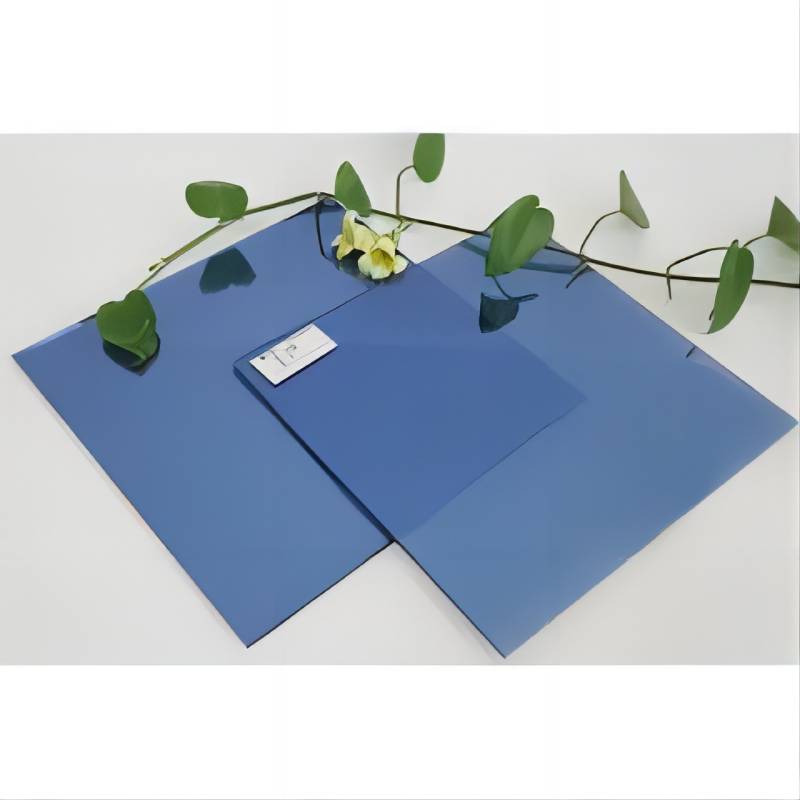Understanding Tempered Glass Types
Tempered glass, also known as toughened glass, is a type of safety glass that has been treated by controlled thermal or chemical processes to increase its strength compared to normal glass. It is commonly used in a variety of applications due to its enhanced durability and safety features. In this article, we'll explore the different types of tempered glass, their applications, and their benefits.
Types of Tempered Glass
1. Standard Tempered Glass
Standard tempered glass is produced by heating the glass to around 620–650 degrees Celsius and then cooling it rapidly. This process puts the exterior of the glass into compression and the interior into tension, which contributes to its strength. Standard tempered glass is widely used in buildings, facades, and various architectural applications.
2. Laminated Tempered Glass
Laminated tempered glass consists of two or more layers of tempered glass that are bonded together with a transparent interlayer, usually made from polyvinyl butyral (PVB). This type of glass provides additional safety as it holds together when shattered, preventing sharp shards from causing injury. Laminated tempered glass is often used in locations where enhanced safety and security are a top priority, such as in storefronts, car windshields, and in high-rise buildings.
3. Heat Soaked Tempered Glass
Heat soaked tempered glass undergoes a secondary heating process called heat soaking, which involves keeping the glass at a high temperature for a period of time. This process helps to identify and eliminate any fabricated defects, such as nickel sulfide inclusions, making the glass less likely to break unpredictably. Heat soaked tempered glass is frequently used in environments that require an extra measure of safety, such as in overhead glass installations, facades, and in certain structural applications.
4. Low Iron Tempered Glass
Low iron tempered glass, also known as extra clear glass, contains a lower iron content, which results in higher clarity and transparency. This type of glass is often used in applications where aesthetics are crucial, such as in glass railing systems, displays, and showrooms. Low iron tempered glass allows for more light transmission and a clearer view compared to standard tempered glass.
tempered glass types
5. Reflective Tempered Glass
Reflective tempered glass has a coating applied to one side that reflects solar energy, minimizing heat buildup inside buildings. This makes it an energy-efficient choice for commercial buildings and areas with significant sunlight exposure. Reflective tempered glass not only enhances energy efficiency but also adds a stylish, modern look to architectural designs.
6. Colored Tempered Glass
Colored tempered glass is available in various colors created through the addition of ceramic pigments or through the application of colored coatings. This type of glass is often used in decorative applications, such as shower enclosures, accent walls, and artistic installations. It allows for unique designs that can complement the aesthetics of modern interiors and exteriors.
Benefits of Tempered Glass
The use of tempered glass offers numerous benefits. Its strength makes it seven to ten times more resilient than standard glass, making it less likely to break under stress. In cases where it does shatter, tempered glass breaks into small, rounded pieces that are less likely to cause injury. This safety factor makes it ideal for use in public spaces, where the risk of accidents is a concern.
Moreover, tempered glass is resistant to thermal stress, making it suitable for applications exposed to significant temperature changes. Its versatility allows it to be used in a variety of architectural and automotive contexts. Lastly, the aesthetic options available, such as clear, reflective, and colored variations, allow designers to achieve a balance of functionality and visual appeal.
Conclusion
Tempered glass represents a vital component in modern architecture and design, providing durability, safety, and aesthetic flexibility. From standard tempered glass used in structural applications to specialized variations like laminated or low iron glass, understanding the types and benefits of this material is crucial for architects, builders, and homeowners alike. Its robust nature and adaptability make tempered glass an enduring choice for various applications in today's world.
 Afrikaans
Afrikaans  Albanian
Albanian  Amharic
Amharic  Arabic
Arabic  Armenian
Armenian  Azerbaijani
Azerbaijani  Basque
Basque  Belarusian
Belarusian  Bengali
Bengali  Bosnian
Bosnian  Bulgarian
Bulgarian  Catalan
Catalan  Cebuano
Cebuano  Corsican
Corsican  Croatian
Croatian  Czech
Czech  Danish
Danish  Dutch
Dutch  English
English  Esperanto
Esperanto  Estonian
Estonian  Finnish
Finnish  French
French  Frisian
Frisian  Galician
Galician  Georgian
Georgian  German
German  Greek
Greek  Gujarati
Gujarati  Haitian Creole
Haitian Creole  hausa
hausa  hawaiian
hawaiian  Hebrew
Hebrew  Hindi
Hindi  Miao
Miao  Hungarian
Hungarian  Icelandic
Icelandic  igbo
igbo  Indonesian
Indonesian  irish
irish  Italian
Italian  Japanese
Japanese  Javanese
Javanese  Kannada
Kannada  kazakh
kazakh  Khmer
Khmer  Rwandese
Rwandese  Korean
Korean  Kurdish
Kurdish  Kyrgyz
Kyrgyz  Lao
Lao  Latin
Latin  Latvian
Latvian  Lithuanian
Lithuanian  Luxembourgish
Luxembourgish  Macedonian
Macedonian  Malgashi
Malgashi  Malay
Malay  Malayalam
Malayalam  Maltese
Maltese  Maori
Maori  Marathi
Marathi  Mongolian
Mongolian  Myanmar
Myanmar  Nepali
Nepali  Norwegian
Norwegian  Norwegian
Norwegian  Occitan
Occitan  Pashto
Pashto  Persian
Persian  Polish
Polish  Portuguese
Portuguese  Punjabi
Punjabi  Romanian
Romanian  Russian
Russian  Samoan
Samoan  Scottish Gaelic
Scottish Gaelic  Serbian
Serbian  Sesotho
Sesotho  Shona
Shona  Sindhi
Sindhi  Sinhala
Sinhala  Slovak
Slovak  Slovenian
Slovenian  Somali
Somali  Spanish
Spanish  Sundanese
Sundanese  Swahili
Swahili  Swedish
Swedish  Tagalog
Tagalog  Tajik
Tajik  Tamil
Tamil  Tatar
Tatar  Telugu
Telugu  Thai
Thai  Turkish
Turkish  Turkmen
Turkmen  Ukrainian
Ukrainian  Urdu
Urdu  Uighur
Uighur  Uzbek
Uzbek  Vietnamese
Vietnamese  Welsh
Welsh  Bantu
Bantu  Yiddish
Yiddish  Yoruba
Yoruba  Zulu
Zulu 

